#muromachi
Text
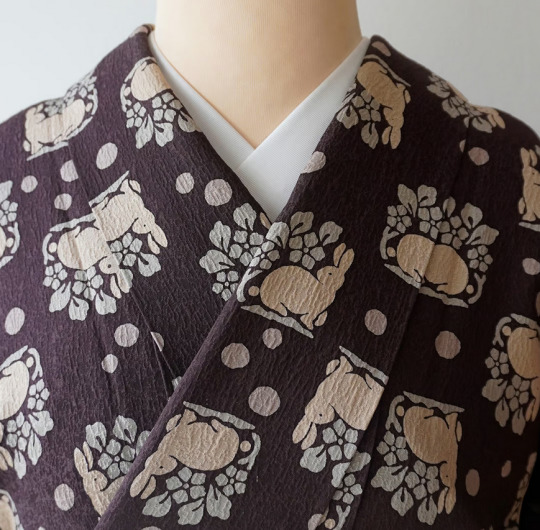
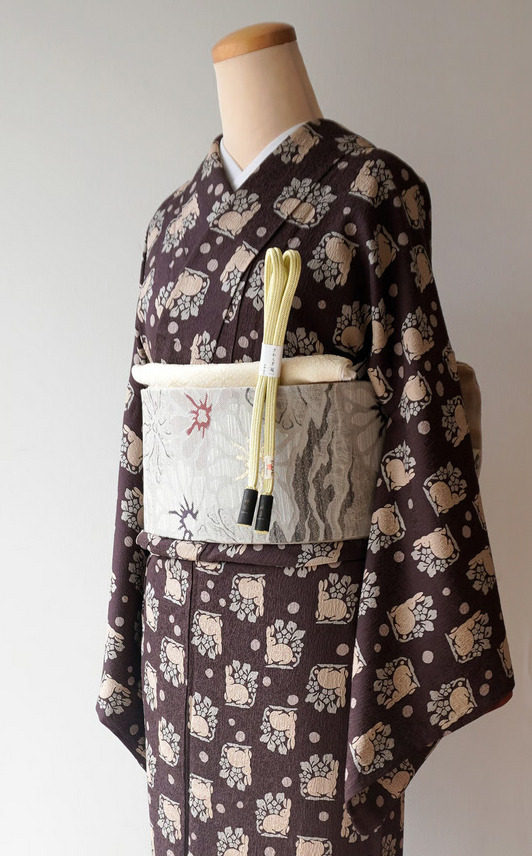
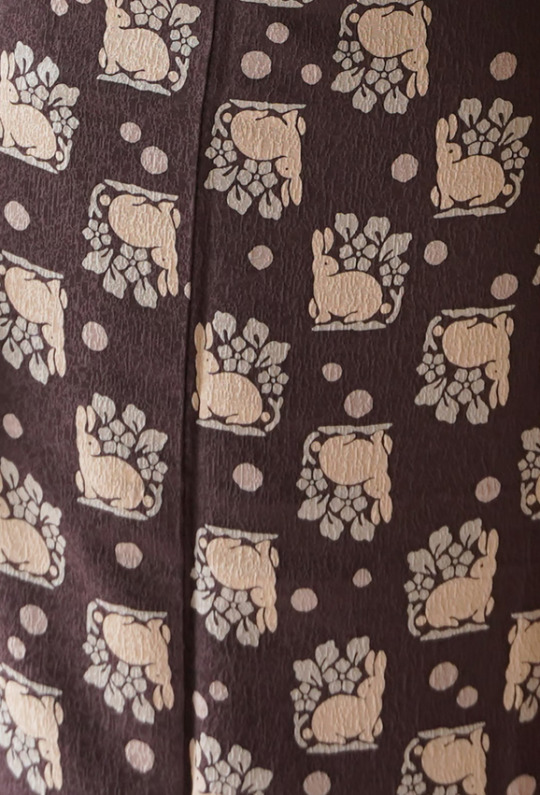
Modern muted kimono patterned with hanausagi (rabbits among flowers), an ancient motif part of the meibutsugire (imported fabrics especially popular during Muromachi period, and used to wrap for ceremonial objects like tea ceremony items).
#japan#fashion#kimono#obi#rabbit#bunny#usagi#hanausagi#rabbit and flower#meibutsugire#muromachi#tea ceremony#着物#帯
429 notes
·
View notes
Text

head of a Nyūbu-no-ono (moutaineering ax) with heart-shaped holes and a flower-shaped head (c. 14th century CE; Muromachi period)
This ax, formerly kept in the Jinshō-ji temple of the Shiga prefecture was used for Buddhist ritualistic purposes to symbolize cutting the ties between monks and their worldly possessions
Currently in the collection of the Nara National Museum (Nara, Japan), accession no. 659-0
#isaac.txt#archaeology#art#japanese art#buddhist art#east asia#asian archaeology#heart#medieval#medieval archaeology#muromachi
257 notes
·
View notes
Text
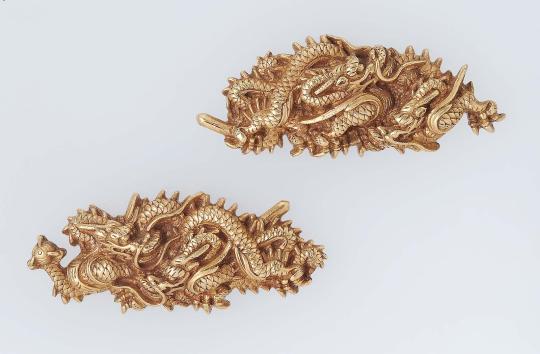
▪︎ Pair of menuki in the form of dragons wirh sword and jewel.
School: Gotô School
Culture: Japanese
Period/Date: Muromachi period, 16th century
Medium: Main material: gold; decorative technique: uchidashi, takabori.
#16th century#history#art#decorative arts#history of art#16th century art#menuki#dragons#sword#japan#japanese#muromachi#gold#Gotô school#jewel
400 notes
·
View notes
Photo
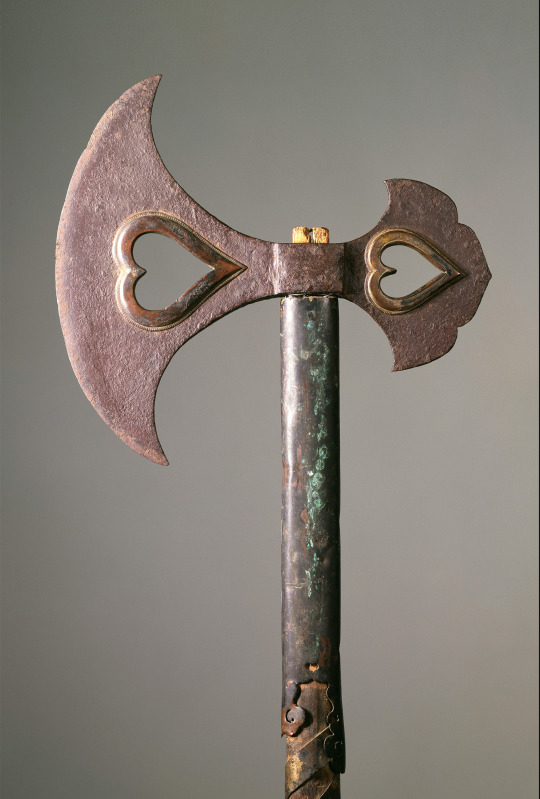
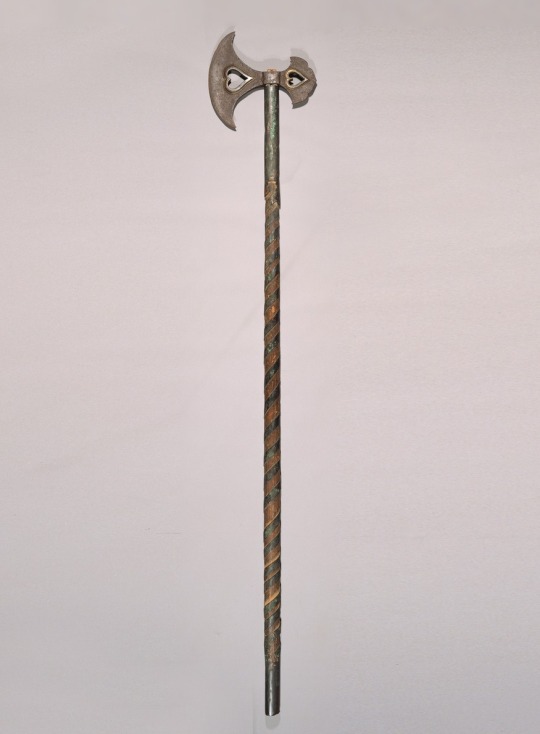
Axe: iron; handle: wood, handle wrapped with bronze strip
Overall H 179.8; L of axe 28.0, W 25.5
Nanbokucho to Muromachi period/14th century
Nara National Museum
659(工124)
While a Nyubu ax used to be a practical tool for mountain ascetics who used it to cut path through the mountains, it later became formalized and was also used as a piece of ritual equipment. This ax comprises a shaft and a blade in a plectrum shape, where the width is shortened in the center. The blade has a heart-shaped hole in the center that is rimmed with copper and the rear part, which has a three-petal shape, also has a similar hole. A narrow copper plate covers the shaft in spirals. Since Yamabushi practitioners of Shugendo (ascetic training to obtain enlightenment through the study of the relationship between man and nature) practice asceticism in rugged areas such as the sacred mountains across the country, they carry gear required for roaming through wilderness. This ax displays the powerfulness of a practical tool through its restrained decoration. This is believed to have been handed down to Jinjoji Temple in Shiga.
#axe#sect#japanese art#japanese weapons#nanbokucho#muromachi#japan#medieval japan#medieval art#medieval japanese art#medieval weapons#nyubu ax#nyubu axe
7 notes
·
View notes
Text

You can literally smell their cuteness!
🌸🇯🇵🌺
#history#munna#koro#musharna#japan#pokemon#incense burner#kalos region#muromachi#japanese history#incense#art history#japanese culture#status symbol#gen 5#game freak#art#nickys facts
8 notes
·
View notes
Text

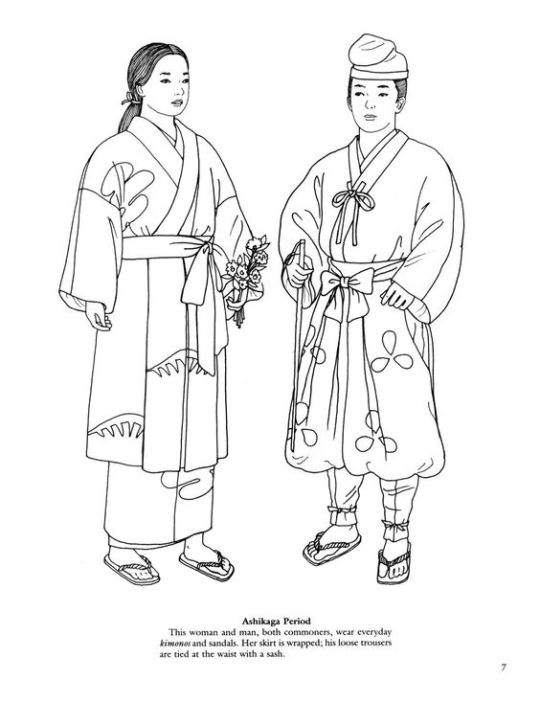



Upper class Boy everyday clothing, robe wide sleeves trimmed w/ double rows of ribbon, pleated/loose fitting pants tied at waist.
This Woman and man, both commoners, wear everyday kimonos and sandals. Her skirt is wrapped; his loose trousers are tied at the waist with a sash.
Nobleman Summer costume made of wide-sleeved robe w/ a trailing train, an embroidered, fringed sash, and wide legged trousers. Hat denotes his rank.
Buddhist prince is a brocade robe, wrapped w/ square-shaped piece of cloth, indicating that he is priest.
This warrior is wearing a richly patterned jacket and loose trousers tucked into leg guards. The armor encasing his body is made of metal, leather, and silk.
#ashikaga#muromachi#japan#japanese#japanese fashion#nobleman#noble#noble fashion#common#commoner#commoner fashion#buddhist priest#buddhist#buddhist fashion#samurai#samurai warrior#samurai fashion#silk#metal#leather#cotton#fashion#historical fashion#medieval#medieval fashion#feudal#feudal japan#feudal era
4 notes
·
View notes
Text

Kanō Utanosuke Yukinobu (ca. 1513-1575) — The Immortal Qin Gao [hanging scroll; ink and color on paper, ca. 1560]
116 notes
·
View notes
Text
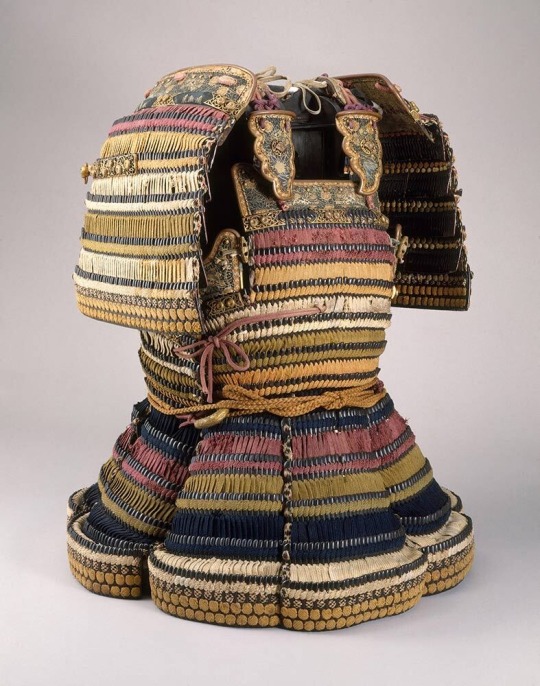
Armor From The Late Muromachi Period, Circa 1392-1573. Photograph By The Met, Gift of Bashford Dean
20 notes
·
View notes
Text




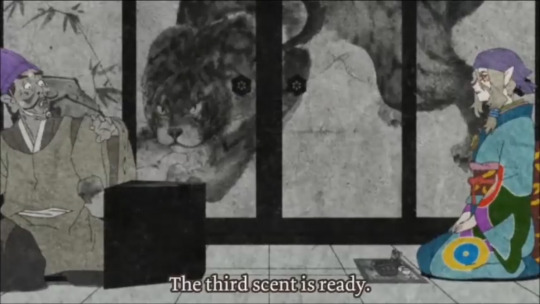
13 notes
·
View notes
Text

Mountaineer’s axe with heart-shaped holes and bronze reinforced shaft,
Nanbokuchō to Muromachi period
14th century
Axe: iron, handle: wood,
Overall H 179.8; L of axe 28.0, W 25.5
Photo Credit & Collection: Nara National Museum, Japan (Formerly kept in Jinshō-ji temple, Shiga).
#art#love#heart-shaped#kisslovegoodbye#rip#blade#japan#muromachi period#shiga#nanbokucho#bronze#14th century#axe#hatchet
31 notes
·
View notes
Photo

Japanese Period Timeline Infographics
Did a simple timeline. It’s hard to summarise each period with just a few words. Hope you like it! 🤓
Pop Culture Trivias:
Ghost of Tsushima is based on the Mongol Invasion of Japan which took place in Kamakura Period where the descendant of Hojo Masako (wife of Minamoto no Yoritomo, the first Shogun of Japan), Hojo Tokimune led the defense.
47 Ronin starring Keanu Reeves, is based on the actual event of 47 loyal Ronin taking up arms to avenge their lord, that took place in Edo Period under the rule of the Tokugawa Shogunate.
The Last Samurai starring Tom Cruise, is based on the Satsuma Rebellion that took place in Meiji Period where Saigo Takamori (Ken Watanbe’s character is based on) led the last Samurai war against the modernised Imperials.
Rurouni Kenshin takes place during Meiji Period where he served the Imperial while his “rival”, Saito Hajime served the Shogunate before he became an Imperial Officer, which is why Saito “dislike” Kenshin in the beginning.
#japan#infographic#japanese timeline#japanese periods#japanese infographic#japanese illustration#japanese art#japanese history#japanese culture#nara period#heian period#kamakura period#muromachi period#azuhi momoyama period#edo period#meiji period#taisho period#showa period#heisei period#reiwa period#samurai#kamakura#ghost of tsushima#the last samurai#47 ronin#satsuma rebellion#rurouni kenshin#saito hajime#hojo masako#minamoto no yoritomo
179 notes
·
View notes
Photo
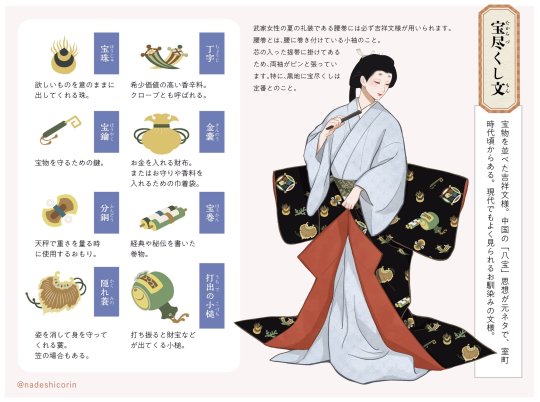
The takarazukushi 宝尽くし or takaramono 宝物 pattern, chart by Nadeshico Rin. This ancient auspicious pattern represents luck-bringing treasures symbols:
Hôju 宝珠, Cintamani flaming jewel said to fulfill wishes
Chôji 丁字, cloves buds, an expensive spice
Hôyaku 宝鑰, granary or warehouse key
Kinnô 金囊, treasure pouch
Fundo 分銅, counterweight
Hôkan 宝巻, scrolls of knowledge (also called more generally makimono)
Kakuremino 隠れ蓑, robe of invisibility (or also hagoromo 羽衣 the heavenly feathered robe)
Uchide no Kozuchi 打ち出の小槌, lucky mallet fulfilling wishes
(List of those fantastical treasures is not set, you can also find other artefacts like: shippô 七宝, geometrical shape representing jewels and precious metal, kakuregasa 隠れ笠, the hat of invisibility, etc).
Rin points that takarazukushi was popular pattern used by samurai women in summer. You can see here how this lady has her katabira 帷子 (summer kimono) around her waist in a way called koshimaki 腰巻. Sleeves stay because they are propped up by a specially reinforced sageobi 提帯 belt.
#japan#fashion#fashion history#Nadeshiko Rin#takarazukushi#Hôju#Chôji#Hôyaku#Kinnô#Fundo#Hôkan#Kakuremino#Uchide no Kozuchi#shippô#kakuregasa#katabira#koshimaki#sageobi#samurai#Muromachi#Edo#着物#帯
333 notes
·
View notes
Video
20230626 Nukata 5 by Bong Grit
Via Flickr:
お地蔵様の石像の前にちっちゃいお地蔵様がたくさん。 @Tenonji temple, Nukata area, Okazaki city, Aichi pref. (愛知県岡崎市額田地区 天恩寺)
#Jizo#Stone statue#Stone#Statue#Green#Nature#Plant#Tenonji temple#Tenonji#Temple#Buddhism#Muromachi era#Muromachi shogunate#Rinzai school#Zen buddhism#Nukata#Nukata area#Okazaki#Aichi#Japan#Nikon#Nikon Df#COSINA#COSINA Voigtländer NOKTON 58mm F1.4 SL2 N#flickr
18 notes
·
View notes
Text
Zutara Mummy AU Idea
This is something that I've been thinking of for a year or two but haven't shared with anyone until now. It either takes place in our Earth, where it starts in late 15th century Japan and then picks up in the 21st century or in the Avatar World where it starts in the Fire Nation in Avatar Kyoshi's era and then picks up in the Avatar equivalent of our modern era. I haven't decided which yet, but the roles and origins of the characters would depend on each setting.
In the prologue, Zuko would be either a minor Kyoshi era Fire Nation prince or a samurai from a daimyo clan in Muromachi Period Japan, depending on the chosen setting. In both settings, he and his immediate family would be great firebenders and (secretly) powerful sorcerers, with the Japanese version being descended from onmyoji, magician courtiers. Katara would be the daughter of either a Southern Water Tribe chief or a Siberian Yup'ik chief.
Either way, they would meet, fall in love, and eventually marry to the approval of the clan patriarch (who would be either the Fire Lord or the local daimyo), but not of Ozai or Azula, who are still Zuko's father and sister, respectively, and their ruthless, power-hungry selves. Later on, Ozai and Azula try to take over their home nation and eventually the world. Zuko and Katara stop them, but they kill Katara. In his grief and rage, Zuko kills his father and sister in battle, but he is fatally wounded and Ozai has already cast a spell to allow all three of them to be magically preserved and resurrected and Zuko to be controlled by his family. In his dying breath, Zuko casts his own spell to allow his wife's reincarnation to resurrect him and maintain his free will. His allies bury him in the family tomb and, after trying to cremate them, hide Ozai and Azula's corpses in separate locations, which they guard to prevent the latter two's resurrections.
540 years later, explorers and treasure hunters find Azula's tomb and accidentally awaken her. After regenerating her body, she approaches Zuko's tomb in order to awaken him, control his mind, and get him to help her find and resurrect their father. In response, the guardians of Zuko's tomb work to lure a reincarnated Katara to it so that she can resurrect him first. This succeeds and Katara, who is now a college freshman from either the Southern Water Tribe or Alaska, accidentally awakens a completely preserved Zuko not long before Azula arrives. The reunited couple escape from Azula, but she hunts them down. Katara must now hide Zuko from his sister and help him navigate the modern world, all while reconciling her past life with her present one and redetermining her relationship with her former husband.
Please reply and reblog with your thoughts and vote which setting you think I should place this story in.
#atla#zutara#zuko#katara#politics#ozai#azula#mummy au#please reblog#japan#muromachi period#fire nation#avatar: the last airbender#kyoshi#southern water tribe#fanfiction
23 notes
·
View notes
Photo

Himeji Castle
#Himeji Castle#姫路城#Hyōgo Prefecture#兵庫県#Akamatsu Norimura#赤松 則村#Muromachi period#室町時代#Muromachi bakufu or Ashikaga bakufu
7 notes
·
View notes
Text

Kyoto
4 notes
·
View notes